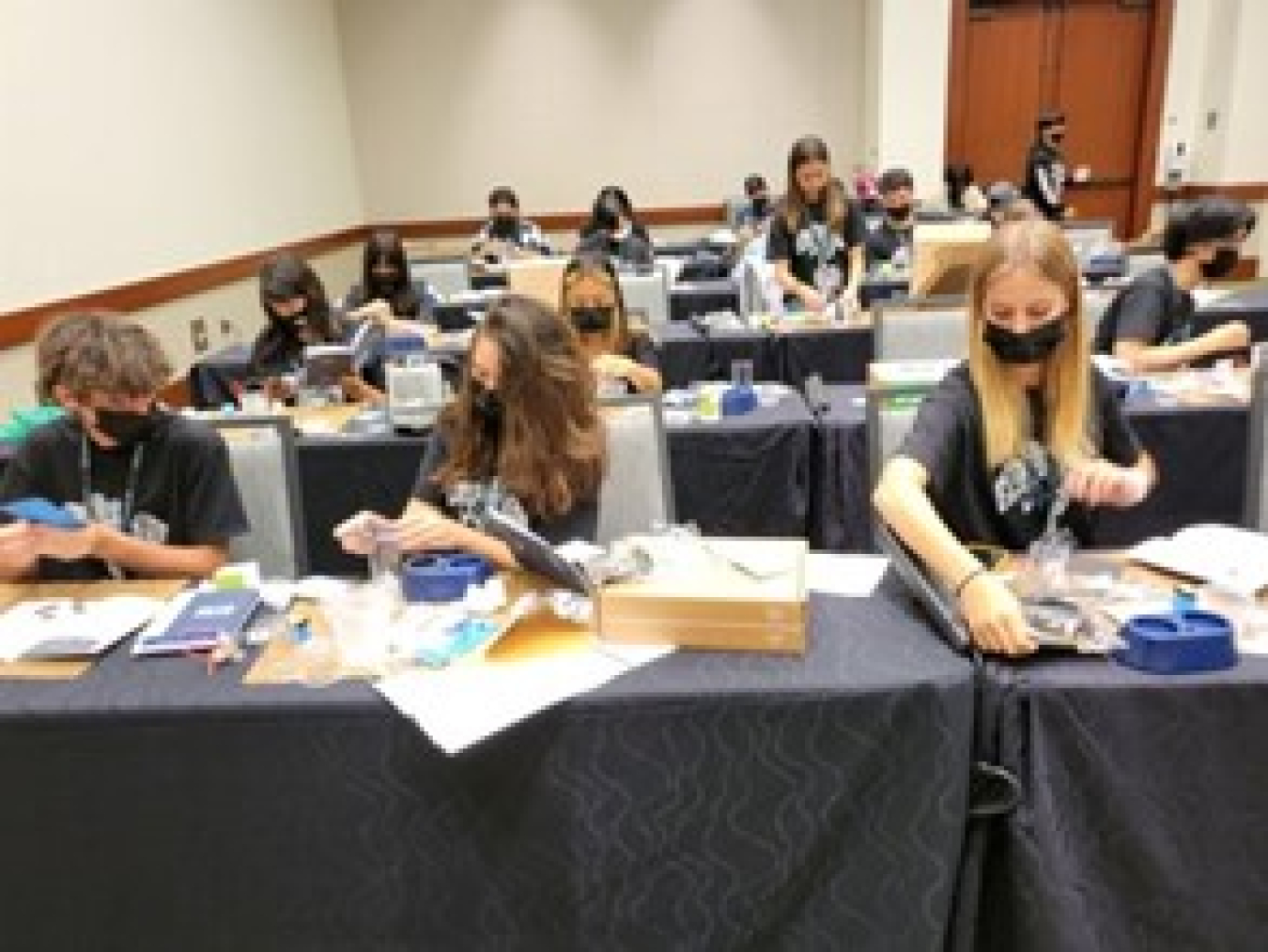The Hawai’i State Energy Office (HSEO) promotes energy efficiency, renewable energy, and clean transportation using funds from the U.S. Department of Energy State Energy Program (SEP) to help achieve a resilient clean energy economy by or before 2045.
Creating Clean Energy Leaders in Public Education
Strong and committed leadership is an incommutable standard that safeguards our society’s energy future. To encourage the next generation of clean energy leaders, HSEO developed a statewide clean energy public education and outreach program that empowers teachers, students, and their families to participate in Hawai’i’s transition to a clean energy economy.
SEP awarded $149,460 in formula grant funding to support this project. This funding aspires to expand upon existing educational programs and develops new clean energy curricula that support the U.S. Department of Education’s (ED) Common Core Standards and Hawai’i ED’s Strategic Plan. Through a partnership between Hawai‘i ED and the Maui Economic Development Board, HSEO developed six K–12 curricula, toolkits, and teacher training modules which were delivered via 3-hour workshops.

Students participating in Module 4: Hydroelectricity and Electrochemistry Lab/Saline.
Title I School Opportunities
The HSEO engaged Title I Schools to ensure low-income children have the same opportunities to help mitigate climate change and prepare for new job opportunities in the emerging renewable energy economy. Specifically, Title I Schools in Hawai’i are those with a minimum poverty threshold of 47.2%, meaning nearly half the student population comes from low-income families.
More than 170 of Hawai’i’s 258 public schools are classified as Title I schools.
Although enabled in the 2015 Every Student Succeeds Act (ESSA), Title I Schools are also a part of ED’s 2022 Equity Action Plan, aligning with President Biden’s Executive Order, Advancing Racial Equity and Support for Underserved Communities Through the Federal Government, and Justice40 goals.
The HSEO engaged 80 Title I Schools, training 152 teachers to implement the Hawai’i Clean Energy Education curriculum and reaching at least 9,500 students statewide.
MEDB STEMworks Projects
In addition, HSEO’s contractor MEDB STEMworks recruited and registered 216 teachers to participate in nine training workshops, providing them with the tools they need to implement the curricula in their classrooms.
I am so grateful for all the materials that were provided and for all the guiding questions; I always struggle with constructing questions. I am so happy that I took this training. I feel more confident implementing this into my classroom, and I am excited to do the labs.
The HSEO Clean Energy Wayfinders program, which incorporates Hawai’ian culture and educates the public on equitable clean energy solutions, has also utilized the Clean Energy Education curriculum in its engagement with community organizations, students, and educators across the state. The Wayfinders are sharing the curriculum as a starting point for educators unable to participate in trainings and using it to guide their development of energy education materials.
To ensure the continuity of the program, MEDB’s STEMworks trained an additional eight facilitators who are available to be contracted to lead future training. MEDB’s STEMworks has also made 100 kits available on MEDB’s STEMworks Lending Library.
Moving Toward a Clean Energy Future
Energy consumption touches every aspect of our lives, and every teacher, regardless of discipline, can find value in implementing the Clean Energy Education curricula in their classroom. By offering this training to anyone who teaches at a Title I School in Hawai’i, the program can open the world of renewable energy to educators and inspire like states to expand energy literacy across the nation now and in future generations.
The DOE State Energy Program provides funding and technical assistance to all 50 states, five U.S. territories, and the District of Columbia to enhance energy security, advance state-led energy initiatives, and increase energy affordability. The State Energy Program emphasizes the state’s role as the decision maker and administrator for program activities within the state that are tailored to their unique resources, delivery capacity, and energy goals.
